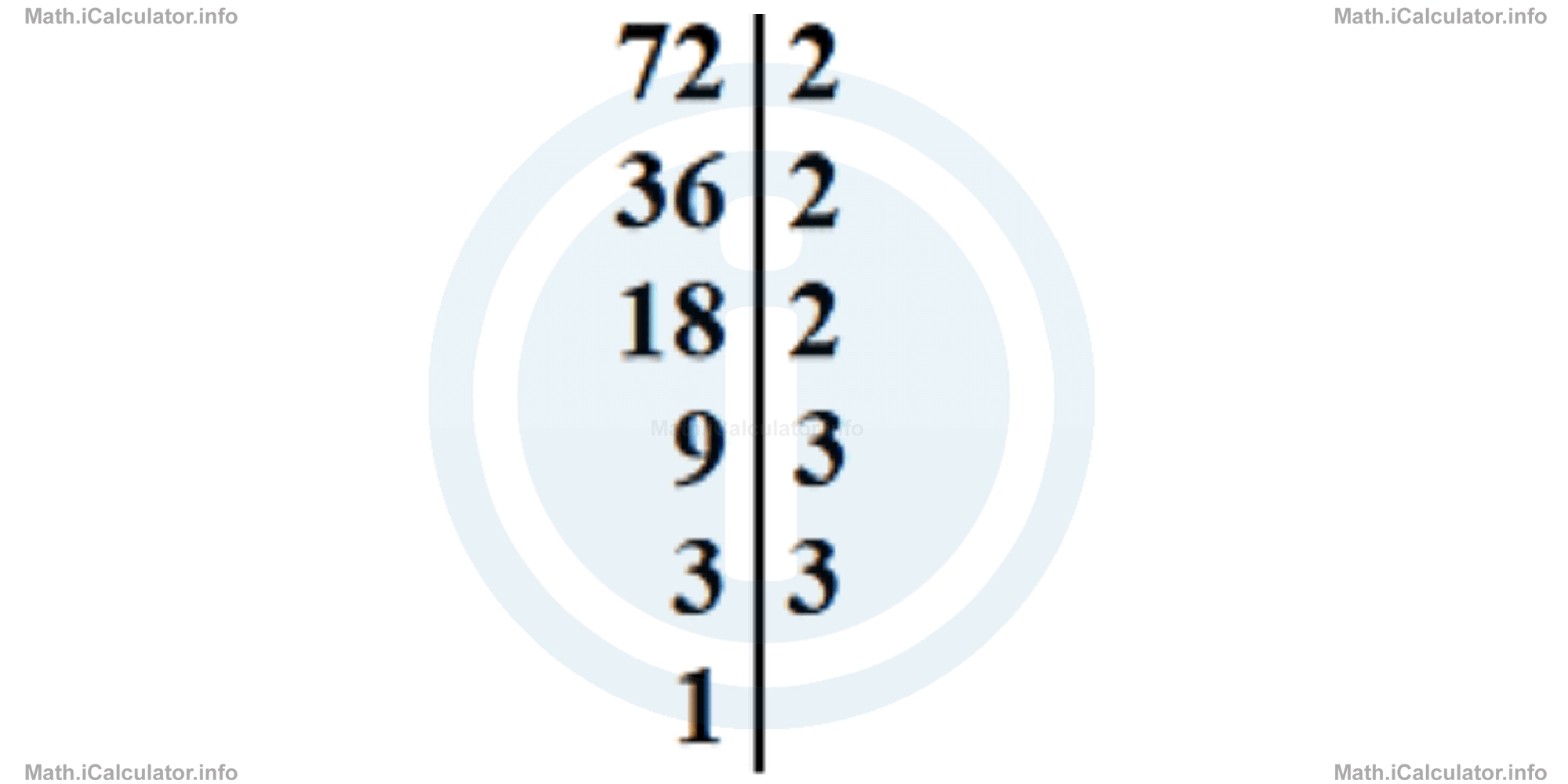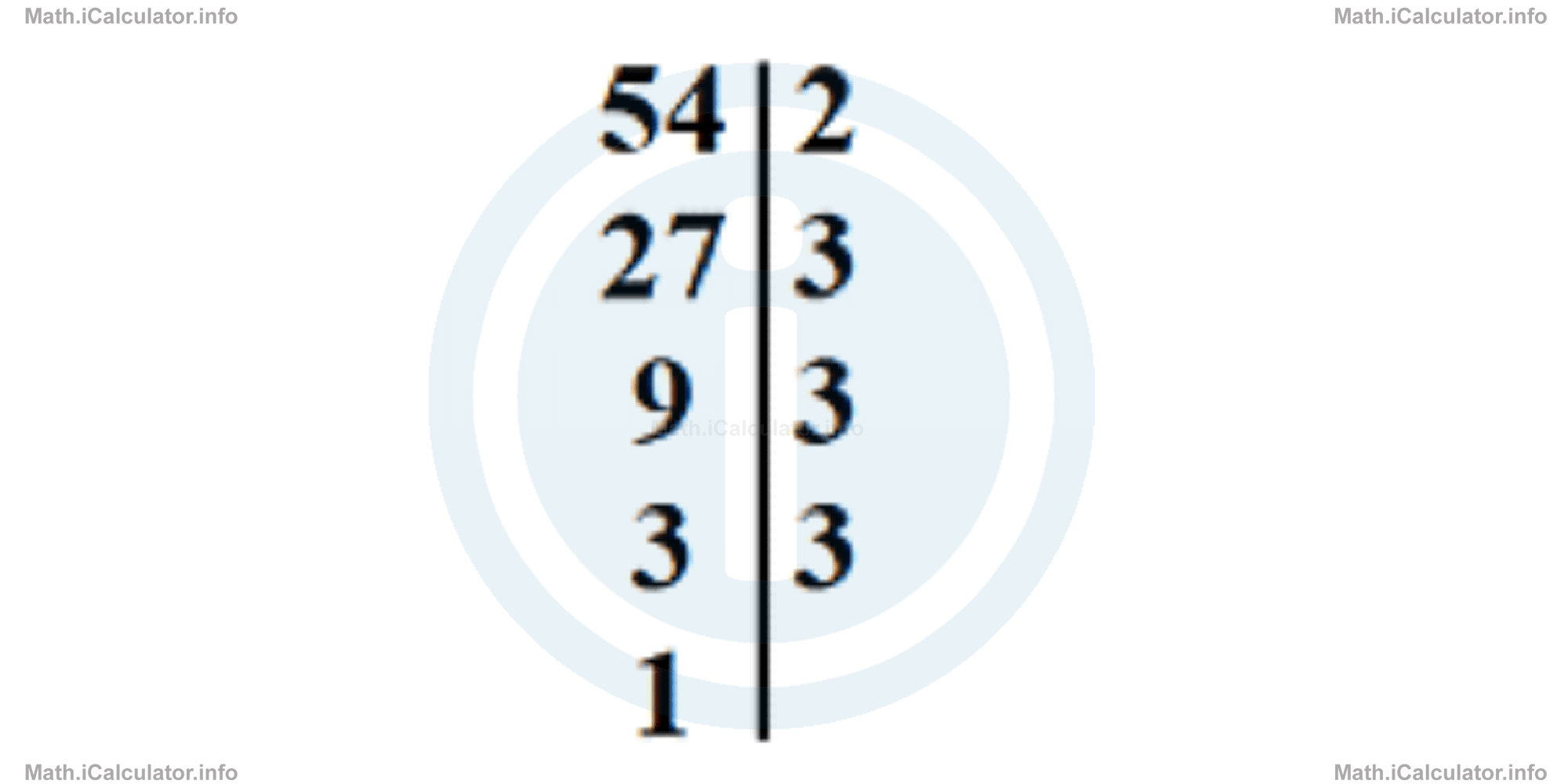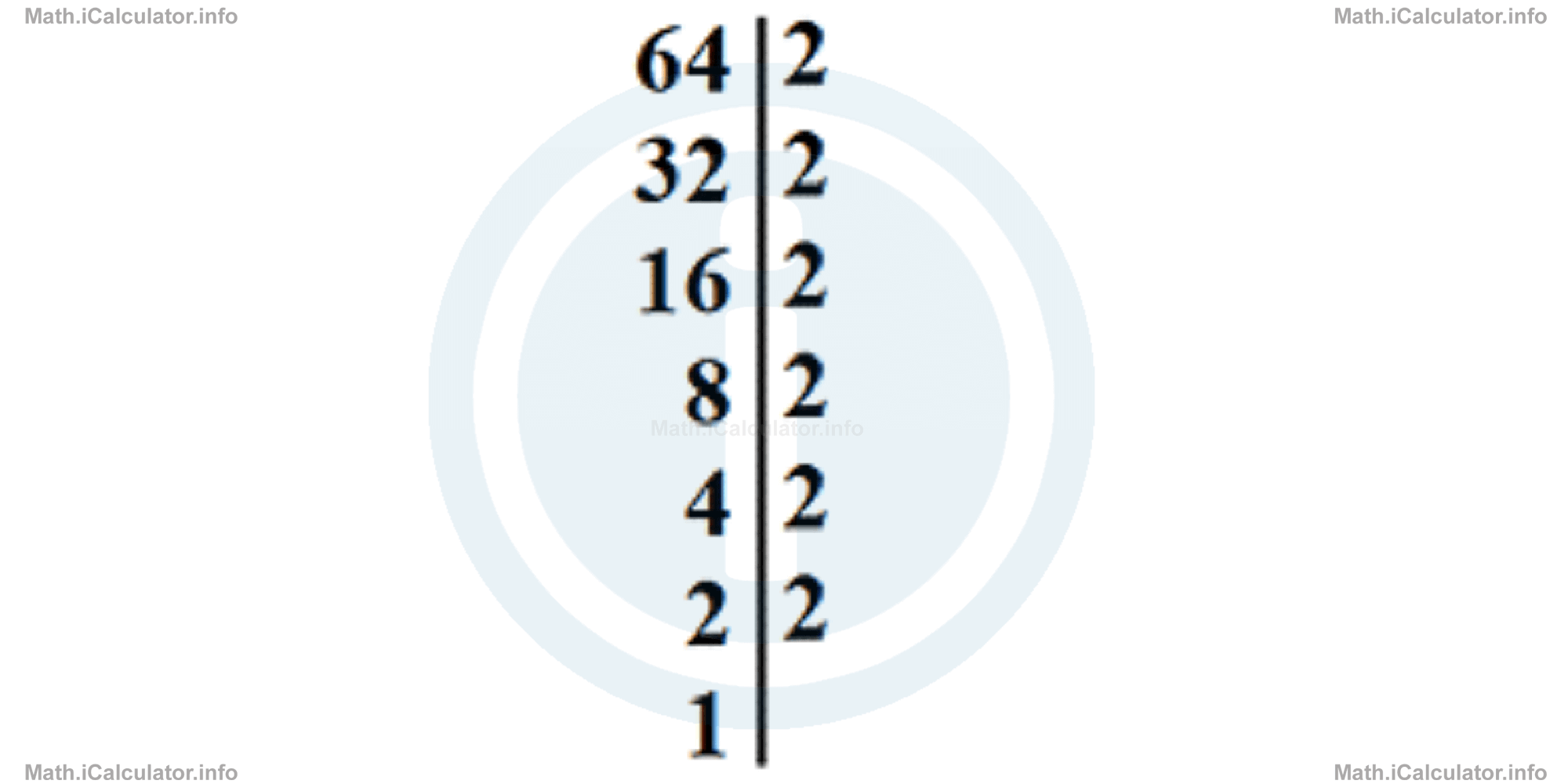Menu
Math Lesson 1.5.4 - Prime Factorization
Please provide a rating, it takes seconds and helps us to keep this resource free for all to use
Welcome to our Math lesson on Prime Factorization, this is the fourth lesson of our suite of math lessons covering the topic of Multiples, Factors, Prime Numbers and Prime Factorization including LCM and GCF, you can find links to the other lessons within this tutorial and access additional Math learning resources below this lesson.
Prime Factorization
Prime factorization means writing a number as a product of its prime factors. For example, in the scheme shown in the previous paragraph in which the number 120 was split into factors, we must consider only the prime ones, that is 2, 2, 2, 3 and 5. When making the Proof:, we obtain
= 4 × 2 × 3 × 5
= 8 × 3 × 5
= 24 × 5
= 120
When the number 120 is expressed as a product of prime factors we can write this in a shorter way as 23 × 3 × 5 instead of 2 × 2 × 2 × 3 × 5.
Example 3
Write the following numbers as a product of prime factors.
- 54
- 90
- 200
Solution 3
- We can write: 54 = 2 × 27
= 2 × 3 × 9
= 2 × 3 × 3 × 3
= 2 × 33 - We can write: 90 = 2 × 45
= 2 × 3 × 15
= 2 × 3 × 3 × 5
= 2 × 32 × 5 - We can write: 200 = 2 × 100
= 2 × 2 × 50
= 2 × 2 × 2 × 25
= 2 × 2 × 2 × 5 × 5
= 23 × 52
Another method for finding the prime factors of a number is by dividing it by prime numbers. These divisors are taken from the smallest, i.e. from 2 and, when it is not possible to divide the number by 2 anymore, we divide it by 3, 5, 7, 11, and so on, i.e. with other prime numbers. With this approach it is better to write the original number in one column, where quotients of divisions with prime numbers are placed below the original number while the prime factors are placed in the other column. For example, if we want to write all prime factors of 72, we write

Hence, the number 72 is written in prime factors as 2 × 2 × 2 × 3 × 3 = 23 × 32.
The method used above is known as the tabular method. It is very suitable for finding the prime factors of big numbers but it has other applications in math as we will see in the next paragraph.
Example 4
Write the numbers 54 and 64 as products of prime factors.
Solution 4
Using the tabular method explained earlier, we can write

So, we have 54 = 2 × 3 × 3 × 3 = 2 × 33.
Likewise,

So, we have 64 = 2 × 2 × 2 × 2 × 2 × 2 = 26.
More Multiples, Factors, Prime Numbers and Prime Factorization including LCM and GCF Lessons and Learning Resources
Whats next?
Enjoy the "Prime Factorization" math lesson? People who liked the "Multiples, Factors, Prime Numbers and Prime Factorization including LCM and GCF lesson found the following resources useful:
- Prime Factorization Feedback. Helps other - Leave a rating for this prime factorization (see below)
- Arithmetic Math tutorial: Multiples, Factors, Prime Numbers and Prime Factorization including LCM and GCF. Read the Multiples, Factors, Prime Numbers and Prime Factorization including LCM and GCF math tutorial and build your math knowledge of Arithmetic
- Arithmetic Video tutorial: Multiples, Factors, Prime Numbers and Prime Factorization including LCM and GCF. Watch or listen to the Multiples, Factors, Prime Numbers and Prime Factorization including LCM and GCF video tutorial, a useful way to help you revise when travelling to and from school/college
- Arithmetic Revision Notes: Multiples, Factors, Prime Numbers and Prime Factorization including LCM and GCF. Print the notes so you can revise the key points covered in the math tutorial for Multiples, Factors, Prime Numbers and Prime Factorization including LCM and GCF
- Arithmetic Practice Questions: Multiples, Factors, Prime Numbers and Prime Factorization including LCM and GCF. Test and improve your knowledge of Multiples, Factors, Prime Numbers and Prime Factorization including LCM and GCF with example questins and answers
- Check your calculations for Arithmetic questions with our excellent Arithmetic calculators which contain full equations and calculations clearly displayed line by line. See the Arithmetic Calculators by iCalculator™ below.
- Continuing learning arithmetic - read our next math tutorial: Divisibility Rules
Help others Learning Math just like you
Please provide a rating, it takes seconds and helps us to keep this resource free for all to use
We hope you found this Math tutorial "Multiples, Factors, Prime Numbers and Prime Factorization including LCM and GCF" useful. If you did it would be great if you could spare the time to rate this math tutorial (simply click on the number of stars that match your assessment of this math learning aide) and/or share on social media, this helps us identify popular tutorials and calculators and expand our free learning resources to support our users around the world have free access to expand their knowledge of math and other disciplines.
Arithmetic Calculators by iCalculator™
- Arithmetic Expressions Calculator
- Decimal Hexadecimal Number Calculator
- Hexadecimal Decimal Number Calculator
- Hindu Arabic To Roman Numbers Converter
- Identifying Factors Number Calculator
- Least Common Multiple And Greatest Common Factor Calculator
- Prime Numbers Identifier
- Greatest Common Divisor Calculator
- Number Format Converter
- Math Powers
- Square Root Calculator
- Exponents Calculator
- Binary Calculator
- Binary To Decimal Calculator
- Common Factors
- Imperial Converter
- Imperial To Metric Converter
- Length Converter
- Metric Converter
- Metric Units Conversion Calculator
- Roman Numerals Converter
- Rounding Numbers Calculator
- Round To Nearest Multiple Calculator
- Sig Fig Calculator
- Unit Rate Calculator
- Weight Conversion Calculator